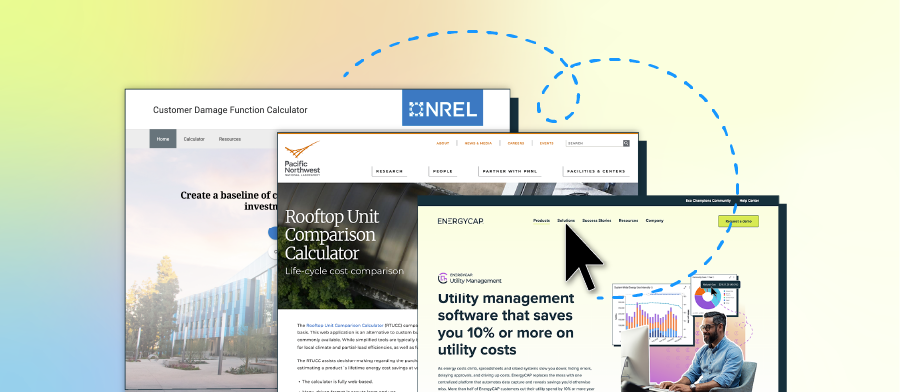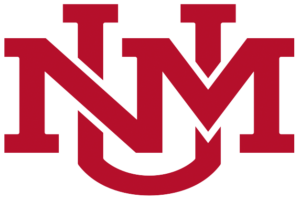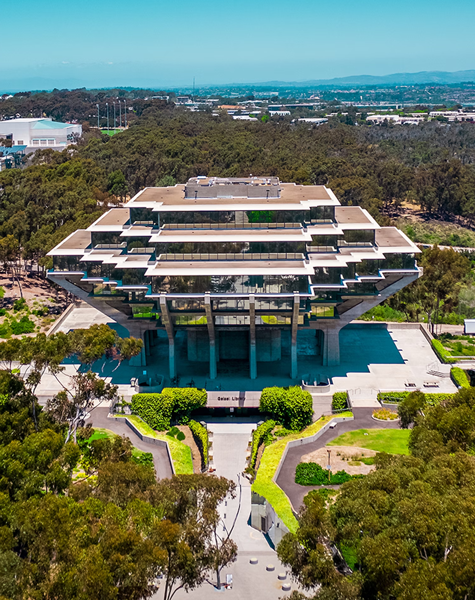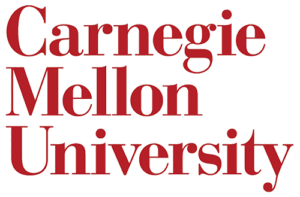Services Provided
- EnergyCAP Enterprise
- Accounting Interface
- Cost Avoidance (M&V)
- Interval Data
- Chargebacks
- Energy Benchmarking
- Greenhouse Gas Tracking
- Report Designer BI
Energy-efficient Equipment
What do Garth Brooks, T. Boone Pickens, Barry Sanders, and Anita Hill have in common? They’re all alumni of Oklahoma State University (OSU), a land grant institution with an enrollment of more than 35,000 students.
Founded December 25, 1890, OSU has grown to more than 300 facilities across a five-campus network that includes six academic colleges, a veterinary school, and an osteopathic medical school. Approximately 1,800 vendor and school-owned meters across those facilities account for an annual utility spend of more than $87 million. While that seems like a lot of money (it is), the number would be substantially higher if the university had not taken steps in 2007 to instill a “culture of conservation.”
The founders of OSU’s energy management program considered three approaches: (1) install new, energy efficient equipment, (2) negotiate new utility rates, and (3) initiate a behavior-based conservation program. They chose to begin with the behavior-based program and established their first campus-wide energy management policy. With the initial approach decided, the plan was put into action, starting with the establishment of an energy management team and university-wide communication.
The EnergyCAP energy and sustainability ERP has been the foundation of OSU’s conservation efforts since they began in 2007, serving as the data storage and analysis tool, performing measurement and verification (M&V) calculations, and reporting energy savings for all OSU campuses.
Negotiate with Utility Vendors
Oklahoma State University’s mission to establish a “culture of conservation” was spawned out of need and a dedication to “do what’s right, even when it’s hard.” As the university grew, so did its energy consumption and, therefore, its annual utility budget. Leadership recognized the advantages—environmental and monetary—of conserving energy and set out to establish an organized energy management program.
The Solution
Three potential approaches to energy and cost savings were considered:
- Install new, energy-efficient equipment
- Negotiate new rates with utility vendors
- Establish a behavior-based conservation program
The decision was made to begin with a behavior-based, no capital investment program, and in June 2007, Energy Management Policy 1-0520 was established. The policy founded campus energy guidelines and the program’s mission statement:
To promote university-wide stewardship of resources by reducing energy consumption, while maintaining a productive educational environment.
Every person, including faculty, staff, and students, was expected to be an ‘energy saver,’ as well as an ‘energy consumer,’” stated Casey Keyser, Senior Energy Manager at the university. After the energy policy was in place, OSU hired a team of five energy managers to implement the plan. They started by meeting with faculty and staff to, per Keyser, “educate and encourage conservation on campus.” Social media also played a valuable role in establishing OSU’s culture of conservation, as the university conveyed its message through a new energy-focused website and a Facebook page. Twitter, Instagram, Snapchat, and Pinterest were added to the effort later. “So much of the energy management work is behind the scenes—scheduling HVAC, auditing buildings on weekends and holidays—so we really wanted to add a personal perspective to what the energy managers do,” Keyser added.
Energy managers found that faculty and staff were concerned that the comfort of building inhabitants would suffer in the pursuit of cost reduction. Keyser said the message conveyed by the energy managers was, “If I’m doing my job well, you won’t realize I’m doing my job.”
Operationally, the energy managers defined expectations and performed frequent energy audits to evaluate the impact of behavior changes and identify additional savings opportunities. They worked closely with facility managers to examine building operations in detail. Building occupancy patterns was an area of focus early in the process. Keyser stated, “You know how the university functions when you’re present but not when you’re not there. Until you take the time to actually observe and measure, you have a guess, but you don’t have any accurate representation of ‘What is the occupancy of the building?’ That’s where the energy manager comes in.” By learning and documenting building occupancy patterns, facility managers were able to match HVAC run-times with class and event schedules, implement holiday shutdowns, and reduce run-times during low-occupancy periods.
Concurrent with initial communication and energy management steps, OSU implemented EnergyCAP UtilityManagement™, a critical step in building a conservation culture within the university’s physical plant. Utility bill data is the foundation of EnergyCAP UtilityManagement’s analysis. The university’s utility bills weren’t really analyzed before the software was in place.
"The only way utility bills were analyzed in any way was, ‘Is anything too big or too small?’ There was no accounting for weather or building use changes. So EnergyCAP UtilityManagement was really, really important for us in that respect."
Casey Keyser // Senior Energy Manager
Prior to implementation, approximately 1,000 submeter readings were handwritten in logbooks every month. The readings were manually entered into an Excel spreadsheet and then re-keyed into a DOS-based application that had been developed in-house. The readings were verified only by a visual audit (i.e., an eyeball test). “One of the biggest benefits that EnergyCAP UtilityManagement brought was giving us the ability to look at those utility bills and seeing opportunities for conservation or identifying issues,” Keyser explained. Due to their heavy reliance on manual processes—recording meter readings, entering utility bill data—the energy management staff were still analyzing data 6–8 weeks after billing. Said Keyser, “We always felt like we were playing catch-up.” But that would change soon.
The meter reading logbooks were soon replaced with laptops, enabling the staff to enter meter readings into Excel and upload the data directly into EnergyCAP UtilityManagement. The new process greatly streamlined data gathering and allowed energy managers to analyze the data much more quickly and identify buildings with the largest potential for energy savings. Keyser noted, “EnergyCAP UtilityManagement was a game-changer for us.”
The impact of OSU’s energy conservation-focused culture was felt quickly. Lower energy use allowed the university to defer the purchase of a new chiller for the Stillwater, OK campus for five years. The university’s utility budget was not increased over that same five-year period, despite the addition of 566,000 sq ft of building space. Keyser emphasized, “That’s big. That’s taxpayer money and something we’re very proud of.”
After spending approximately four to five years focusing on energy conservation and management, OSU added energy efficiency initiatives to the mix. Energy efficiency actions included lighting retrofits, VendingMiser® sensors, weatherstripping and caulking, steam pipe insulation, variable frequency drives, motor upgrades, and laboratory controls.
The effectiveness of OSU’s conservation efforts was verified through EnergyCAP UtilityManagement’s Cost Avoidance calculations and according to Keyser, “far exceeded expectations.” Documented cost avoidance for the period of FY 2007–2012 was approximately $20 million.
Energy savings continued after 2012. In 2013, multiple individual facilities verified cost avoidance in excess of $1 million, and the university’s student housing facilities earned ENERGY STAR awards for their top 25% energy efficiency rankings. A university-owned windfarm was also put into operation, producing at least 67% of the electricity consumed by OSU-Stillwater and greatly reducing the campus’ carbon footprint.
OSU’s energy management team further streamlined their operation in 2013 by expanding their use of EnergyCAP UtilityManagement. First, new functionality allowed for the immediate upload of meter readings directly to the database. Secondly, an interface was established between EnergyCAP UtilityManagement and the university’s Banner accounting system. With these advancements, vendor and self-generated utility bills—calculated by EnergyCAP UtilityManagement—could be audited and approved in EnergyCAP UtilityManagement prior to being charged out by the university, rather than 6–8 weeks post-charge out.
Keyser pointed out that, while many changes and improvements were taking place, communication remained a constant.
"The whole time, we’re still talking to new deans, new department heads, new staff on 5 campus, new students. Every fall, we have a new audience we need to get in front of and familiarize with the conservation program on campus.”
Casey Keyser // Senior Energy Manager
Public recognition is an important component in OSU’s effort to maintain and promote its culture of conservation. The university has received multiple public awards as a result of its successful conservation program and honors staff with internal awards:
2015: Top 100 finish in the Campus Conservation NationalsRecognized by EPA as Top Green Power Partner
2016: Henry Bellmon Sustainability Award for Responsible Economic Growth from Sustainable Tulsa
2017: Introduced OSU Energy Leadership Award
2018: Introduced OSU Decade of Excellence Award
Keyser said, “We really want to recognize the people who are making a difference on campus.” To date, 20 individuals and one campus department have received the Decade of Excellence Award, because they have been instrumental in the program’s success.
Behavior-based Conservation
Over the conservation program’s first 12 years, EnergyCAP UtilityManagement has documented a cost avoidance of more than $66.7 million. That’s a reduction of 18.6% compared to the 2006 baseline year. The goal cost avoidance is 20%, and as of September 2019, four of OSU’s five campuses have exceeded the goal.
The program has also been a tremendous success from a sustainability perspective. Keyser pointed out that OSU’s reduced energy consumption has resulted in a reduction of 155,000 metric tons of CO2e in the atmosphere. That equates to the removal of 32,000 passenger automobiles from the road for an entire year.
OSU is not resting on its laurels. Keyser is currently working to develop a Climate Action Plan that reflects the university’s focus on improving its carbon footprint. They have also integrated their Building Controls Group with Energy Management to form a united front in the pursuit of additional energy savings and the university-wide 20% cost avoidance goal.
In summary, Keyser stated:
"In order to create and maintain our ‘culture of conservation,’ we will continue to promote energy conservation, practice effective energy management, and improve energy efficiency where we can. We continue to look for opportunities to get the program recognized and look for opportunities on campus to recognize people who are making a difference. We report savings in as many ways as we can and at as many levels as possible, and EnergyCAP is a huge part of that. The program would not have the success it has without EnergyCAP UtilityManagement, because the reporting, the analysis, all of that, is the bread and butter of the program. Without the information that we’re able to pull from EnergyCAP UtilityManagement, we just wouldn’t be able to have the conversations that we need to have across campus."
Casey Keyser // Senior Energy Manager


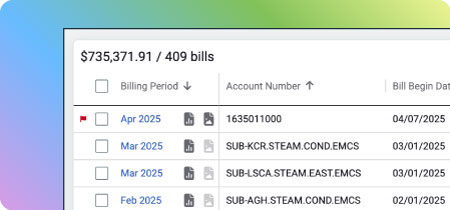


![Top 12 sustainability reporting platforms (ESG) [2026]](https://www.energycap.com/wp-content/uploads/2025/12/blog_article_top-sustainability-platforms.webp)

